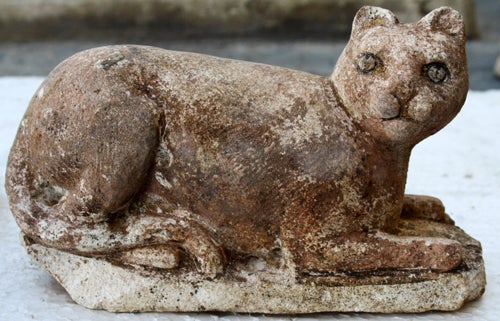The remains of a temple of Queen Berenike - wife of King Ptolemy III - have been discovered by archaeologists in Alexandria, Egypt.
Dr. Zahi Hawass said the remains discovered are 60 meters by 15 meters, and extend under Ismail Fahmy street. About 600 Ptolemaic statues - amongst which are beautiful depictions of the cat goddess Bastet - were also unearthed.
Dr. Mohamed Abdel Maqsoud, Head of Antiquities of Lower Egypt, said that the mission excavating at Kom el Dikka on property of the Alexandria Security Forces included 18 skilled excavators and restorers. The large collection of Bastet statues indicates that the temple was dedicated to her.
The Bastet statues were unearthed in three different areas of the site, alongside other limestone statues of unidentified women and children. Clay pots and bronze and faience statues of different ancient Egyptian deities have also been uncovered, as have terracotta statues of the gods Harpocrates and Ptah.
Early studies on site revealed that the temple’s foundation can be dated to the reign of Queen Berenike - the wife of King Ptolemy III Euergetes (246-222 BC) - making this the first Ptolemaic temple discovered in Alexandria to be dedicated to Bastet. It also indicates that her worship continued in Egypt after the decline of the ancient Egyptian era.
Bastet originally took the form of a lion and protected the king during battle. However the Greek rulers of the Ptolemaic Dynasty associated her instead with their own Artemis, changing her appearance to that of a cat and calling her Ailuros, a lunar goddess.
The temple is thought to have been destroyed in later eras when it was put to use as a quarry, which lead to the disappearance of most of its stone blocks.
The inscribed base of a granite statue from the reign of King Ptolemy IV (205-222 BC) was also unearthed. It bears ancient Greek text written in nine lines stating that the statue belonged to a top official in the Ptolemaic court. Dr. Maqsoud claims the base was made to celebrate Egypt’s victory over the Greeks during the Battle of Raphia in 217 BC.
A Roman water cistern, a group of 14 meter-deep water wells, stone water channels, the remains of a bath area and a large number of clay pots and sherds that can be dated to the 4th century BC were also uncovered.
According to Dr Maqsoud, it is very possible that this find - made during routine excavations at the Kom el Dikka area - is the first trace of the real location of Alexandria's royal quarter.
Queen Berenike's Bastet Temple Discovered at Kom el Bikka – Photographs
Video: Salima Ikram Talks about the Secrets of Animal Cults in Egypt
Subscribe to Independent Premium to bookmark this article
Want to bookmark your favourite articles and stories to read or reference later? Start your Independent Premium subscription today.


Join our commenting forum
Join thought-provoking conversations, follow other Independent readers and see their replies